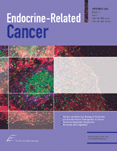| HOME | HELP | FEEDBACK | SUBSCRIPTIONS | ARCHIVE | SEARCH | TABLE OF CONTENTS |
|
|
||||||||
REVIEW |
1 National Institutes of Health, Bethesda, Maryland, USA
2 University of Düsseldorf, Düsseldorf, Germany
3 Memorial Sloan-Kettering Cancer Center, New York, New York, USA
4 Dana-Farber Cancer Institute, Boston, Massachusetts, USA
5 Erasmus Medical Center, Rotterdam, the Netherlands
6 University of Michigan, Ann Arbor, Michigan, USA
7 Columbia University, New York, New York, USA
8 Magdeburg University Medical School, Magdeburg, Germany
9 National Hypertension Association, New York, New York, USA
10 University of Pennsylvania School of Medicine, Philadelphia, Pennsylvania, USA
11 Medizinische Universitätsklinik, Freiburg, Germany
12 Mayo Clinic, Rochester, Minnesota, USA
13 New England Medical Center, Boston, Massachusetts, USA
(Requests for offprints should be addressed to G Eisenhofer, Building 10, Room 6N252, National Institutes of Health, 10 Center Drive MSC 1620, Bethesda MD 20892-1620, USA; Email: ge{at}box-g.nih.gov)
Pheochromocytomas are rare catecholamine-producing neuroendocrine tumors that are usually benign, but which may also present as or develop into a malignancy. Predicting such behavior is notoriously difficult and there are currently no curative treatments for malignant tumors. This report follows from a workshop at the Banbury Conference Center, Cold Spring Harbor, New York, on the 16th–18th November 2003, held to review the state of science and to facilitate future progress in the diagnosis and treatment of malignant pheochromocytoma. The rarity of the tumor and the resulting fragmented nature of studies, typically involving small numbers of patients, represent limiting factors to the development of effective treatments and diagnostic or prognostic markers for malignant disease. Such development is being facilitated by the availability of new genomics-based tools, but for such approaches to succeed ultimately requires comprehensive clinical studies involving large numbers of patients, stringently collected clinical data and tumor samples, and interdisciplinary collaborations among multiple specialist centers. Nevertheless, the well-characterized hereditary basis and the unique functional nature of these neuroendocrine tumors provide a useful framework that offers advantages for establishing the pathways of tumorigenesis and malignancy. Such findings may have relevance for understanding the basis of other more common malignancies where similar frameworks are not available. As the relevant pathways leading to pheochromocytoma are established it should be possible to take advantage of the new generation of drugs being developed to target specific pathways in other malignancies. Again the success of this will require well-designed and coordinated multicenter studies.
This article has been cited by other articles:
 |
H. J L M Timmers, A.-P. Gimenez-Roqueplo, M. Mannelli, and K. Pacak Clinical aspects of SDHx-related pheochromocytoma and paraganglioma Endocr. Relat. Cancer, June 1, 2009; 16(2): 391 - 400. [Abstract] [Full Text] [PDF] |
||||
 |
K.-S. Park, J.-L. Lee, H. Ahn, J.-M. Koh, I. Park, J.-S. Choi, Y. R. Kim, T. S. Park, J.-H. Ahn, D. H. Lee, et al. Sunitinib, a Novel Therapy for Anthracycline- and Cisplatin-refractory Malignant Pheochromocytoma Jpn. J. Clin. Oncol., May 1, 2009; 39(5): 327 - 331. [Abstract] [Full Text] [PDF] |
||||
 |
J. T. Adler, G. Y. Meyer-Rochow, H. Chen, D. E. Benn, B. G. Robinson, R. S. Sippel, and S. B. Sidhu Pheochromocytoma: Current Approaches and Future Directions Oncologist, July 1, 2008; 13(7): 779 - 793. [Abstract] [Full Text] [PDF] |
||||
 |
W. Yuan, W. Wang, B. Cui, T. Su, Y. Ge, L. Jiang, W. Zhou, and G. Ning Overexpression of ERBB-2 was more frequently detected in malignant than benign pheochromocytomas by multiplex ligation-dependent probe amplification and immunohistochemistry Endocr. Relat. Cancer, March 1, 2008; 15(1): 343 - 350. [Abstract] [Full Text] [PDF] |
||||
 |
A. Karagiannis, D. P Mikhailidis, V. G Athyros, and F. Harsoulis Pheochromocytoma: an update on genetics and management Endocr. Relat. Cancer, December 1, 2007; 14(4): 935 - 956. [Abstract] [Full Text] [PDF] |
||||
 |
L. Amar, E. Baudin, N. Burnichon, S. Peyrard, S. Silvera, J. Bertherat, X. Bertagna, M. Schlumberger, X. Jeunemaitre, A.-P. Gimenez-Roqueplo, et al. Succinate Dehydrogenase B Gene Mutations Predict Survival in Patients with Malignant Pheochromocytomas or Paragangliomas J. Clin. Endocrinol. Metab., October 1, 2007; 92(10): 3822 - 3828. [Abstract] [Full Text] [PDF] |
||||
 |
A. Chrisoulidou, G. Kaltsas, I. Ilias, and A. B Grossman The diagnosis and management of malignant phaeochromocytoma and paraganglioma Endocr. Relat. Cancer, September 1, 2007; 14(3): 569 - 585. [Abstract] [Full Text] [PDF] |
||||
 |
T. Scholz, G. Eisenhofer, K. Pacak, H. Dralle, and H. Lehnert Current Treatment of Malignant Pheochromocytoma J. Clin. Endocrinol. Metab., April 1, 2007; 92(4): 1217 - 1225. [Abstract] [Full Text] [PDF] |
||||
 |
T. H. Pham, C. Moir, G. B. Thompson, A. E. Zarroug, C. E. Hamner, D. Farley, J. van Heerden, A. N. Lteif, and W. F. Young Jr Pheochromocytoma and Paraganglioma in Children: A Review of Medical and Surgical Management at a Tertiary Care Center Pediatrics, September 1, 2006; 118(3): 1109 - 1117. [Abstract] [Full Text] [PDF] |
||||
 |
L. Amar, J. Bertherat, E. Baudin, C. Ajzenberg, B. Bressac-de Paillerets, O. Chabre, B. Chamontin, B. Delemer, S. Giraud, A. Murat, et al. Genetic Testing in Pheochromocytoma or Functional Paraganglioma J. Clin. Oncol., December 1, 2005; 23(34): 8812 - 8818. [Abstract] [Full Text] [PDF] |
||||
 |
P. L.M. Dahia, K. Hao, J. Rogus, C. Colin, M. A.G. Pujana, K. Ross, D. Magoffin, N. Aronin, A. Cascon, C. Y. Hayashida, et al. Novel Pheochromocytoma Susceptibility Loci Identified by Integrative Genomics Cancer Res., November 1, 2005; 65(21): 9651 - 9658. [Abstract] [Full Text] [PDF] |
||||
| HOME | HELP | FEEDBACK | SUBSCRIPTIONS | ARCHIVE | SEARCH | TABLE OF CONTENTS |